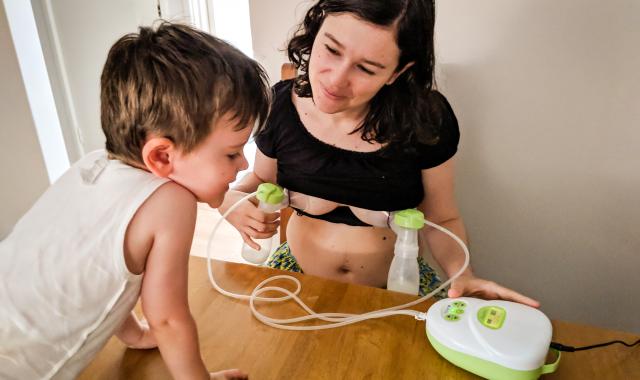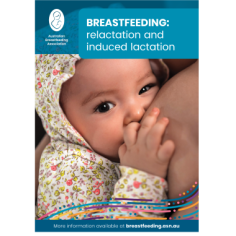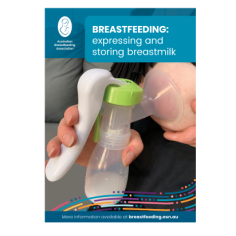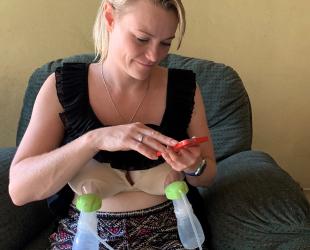Bringing in a milk supply involves a lot of expressing. Here's where to start.

For most people, relactating or inducing lactation starts with expressing. If your child is not yet willing to suck on your breast, or you are preparing for breastfeeding before you have your child with you, you can use a breast pump and/or hand express to build up a milk supply.
Using an electric pump with a double kit is most effective. This takes milk from both breasts at once. Not only does it save you time, pumping both breasts at once results in higher hormone (prolactin) levels needed to build milk-making tissue, more let-downs and milk with a higher energy content than pumping one breast at a time. Read more on choosing, hiring and using an electric breast pump.
Pumping to start making milk
-
It’s helpful if you can pump at least 6 to 8 times a day, even more often if you can.
-
Pump at least once during the night.
-
It’s more effective to pump more often, for shorter periods, than less often for longer periods.
-
Start out slowly, pumping only for 5 to 10 minutes on low suction to begin with.
-
Gradually increase the length of each expressing session up to about 15 to 20 minutes.
-
Use hand expressing and breast compressions.
Breast compressions, hand expressing and massage can help
If you have been only pumping and find that your milk supply is not increasing, try using breast compressions during pumping to help your breasts to release milk.
You could also add these after pumping or between pumping sessions.
Hand expressing removes small amounts of milk that the pump can’t. It can take practice to master but is very effective. Some women use hand expressing only to build their milk supply.
Combine hand expression with breast massage to help the milk to flow. Massage first, then express. Massage again, and then repeat the hand expressing and so on. To massage your breasts, work evenly around your entire breast, stroking gently downward towards your nipple.
These extra techniques may help to encourage your breasts to increase the amount of milk they make. The emptier your breasts, the stronger the message they get to make more milk.
How will I know that it’s working?
The first change you may notice once you start is that your body feels different. Your breasts may feel hotter, tingle or get bigger or heavier. In anything from a few days to a few weeks after starting, you may be able to express some drops of milk. In some cases, hormone changes may cause a brief slump in mood just before the first milk appears. So, feeling down may be a good sign, and a breakthrough may be close. As your supply builds, you may also start to feel regular let-downs.
Your milk won’t ‘come in’ like it does for a parent who has just given birth. The change in hormone levels after birth means that a lot of milk is produced quickly. Instead, when you are inducing lactation or relactating, small amounts of milk are produced at first and then your milk supply increases gradually.
© Australian Breastfeeding Association April 2022
Read more about bringing in a milk supply
Evidence-led info and practical tips from our Special Situation Information Series
Breastfeeding: relactation and induced lactation

All you need to know about pumping and feeding your milk to your baby
Breastfeeding: expressing & storing breastmilk




